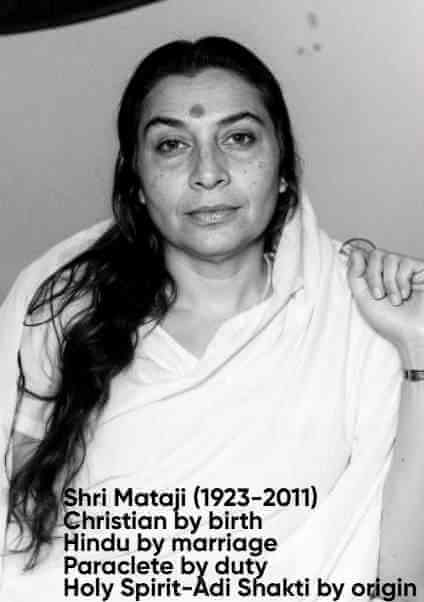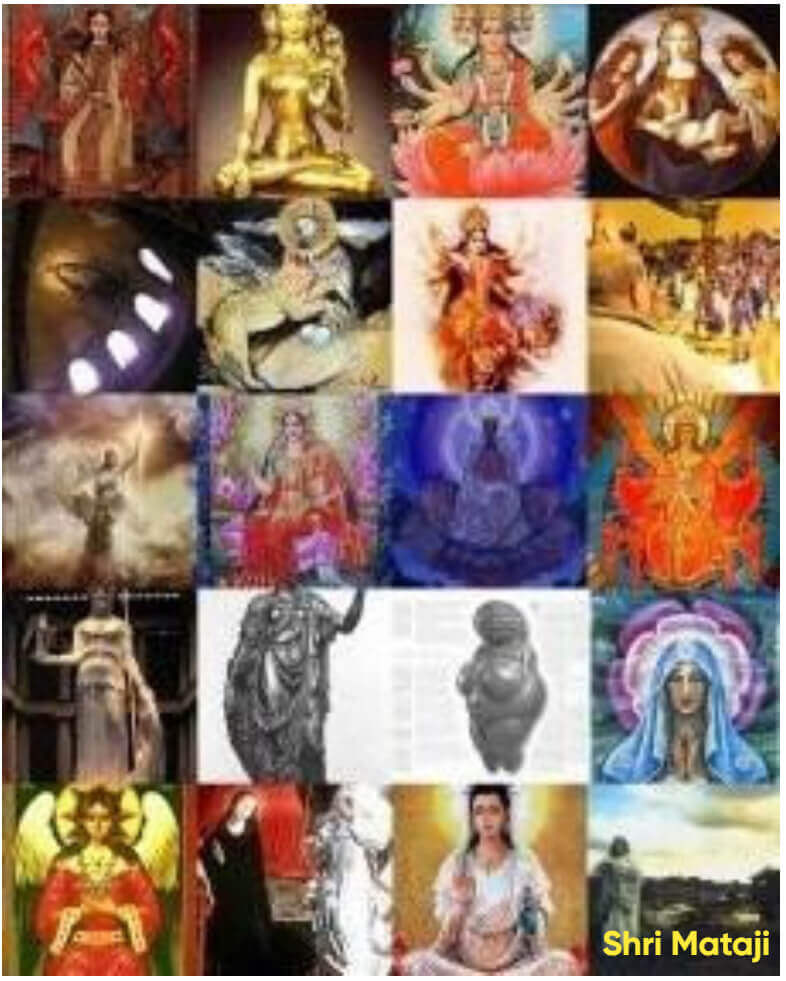Maha Shakti: The Universal Mother
Maha Shakti—the Universal Mother—is the dynamic force of creation, preservation, and transformation. As the active aspect of Supreme Consciousness, She manifests as Durga, Lakshmi, Saraswati, Kali, and Kundalini, guiding seekers toward purity, truth, and Self-realization. This forum post explores Her role as jagat janani (creator of the universe), bhrantinashini (destroyer of illusion), and daridryanashini (remover of poverty). Through disciplined sadhana and inner awakening, aspirants invoke Her power to transcend ego, attachment, and lower tendencies. Maha Shakti is not merely worshipped—She is lived, experienced, and realized as the Divine Feminine within.
Maha Shakti: The Universal Mother
INNER VOICE | Maa Purnanada October 21, 2004
The root and core of all moral discipline is mental purification
attained by refraining from all evil actions and the practice of
virtues. Brahmacharya (self-control), ahimsa (non-injury) and satya
(truth) are the three fundamentals for avoiding sin, holding on to
virtues and self-purification.
To get freedom from miseries, man has to observe truth and purity in
thoughts, words, deeds and attitude. The individual should strive to
adhere to higher qualities and to manifest them. To manifest them he
needs to invoke his inner divine power.
This divine power, the active aspect of the supreme consciousness,
is called shakti, whereas the unchanging supreme consciousness is
called Shiva. There is no difference between Shiva and his shakti,
just as there is no difference between fire and its burning power.
She is Durga, Lakshmi, Saraswati, Kali, Chandi, Chamundi,
Tripurasundari, Lalita, Kundalini, Parvati and Rajarajeshwari. She
is prakriti — nature itself. She is jagat janani (creator),
bhrantinashini (destroyer of illusion) and daridryanashini
(destroyer of poverty). As maha Lakshmi, she destroys Mahishasura,
the demon representing the animal-mind of man. As maha Saraswati,
she destroys Shambha and Nishumbha, the demons representing the ego and attachment in man.
Shakti may also be termed as that by which we live and have our
being in this universe. The Mother provides all the wants of the
child. Activities and the energy needed for it depend upon Maha
Shakti, the supreme provider. Thus Maha Shakti is the Universal
Mother.
Worship of Shakti or Shaktaism is one of the oldest religions.
Everybody loves to possess power. He wants to dominate over others
through power. Thus, every man in this world is a follower of
Shaktaism.
Shaktaism prescribes systematic sadhana (practice) of yoga, regular
discipline according to the temperament, capacity and degree of
evolution of the sadhaka (practitioner/seeker). In this context,
sadhana means unfolding, rousing up or awakening of the power of
Shakti. Worship of the Divine Mother helps the aspirant to rise
above his own lower tendencies and animal instincts, to purify him
and ultimately to realise the divine power within himself. On the
auspicious occasion of Sree Durga Puja utsava, may Universal Mother
bless us with purity, prosperity and peace.
Maha Shakti: The Universal Mother
HindustanTimes.com October 21, 2004
Consciousness: A New Spirituality for Our Deepest Dilemmas
I. Introduction: The Dawning of a New Spiritual Paradigm
In an age marked by unprecedented technological advancement and global interconnectedness, a profound sense of disconnection and existential angst pervades modern society. Many find themselves adrift in a sea of information, grappling with a fragmented sense of self and a deep-seated longing for meaning that neither traditional religious dogma nor secular materialism seems to adequately address. It is out of this collective crisis of meaning that a new spiritual paradigm is emerging, one that is not based on belief systems or external authority, but on the direct, experiential exploration of consciousness itself. This new spirituality offers a practical and profound pathway to wholeness, a way to navigate our deepest longings and dilemmas by turning our attention inward, to the very source of our awareness.
II. The Crisis of Meaning and the Limits of Old Paradigms
The modern dilemma is characterized by a paradox: we are more connected than ever, yet we feel increasingly isolated. This sense of alienation is fueled by a confluence of factors, including the decline of traditional religious frameworks and the rise of a purely materialistic worldview. While science has unveiled the intricate workings of the physical universe, it has simultaneously created what many perceive as a "disenchanted" world, a cosmos devoid of inherent meaning or purpose. This has led to what philosophers and neuroscientists call the "hard problem" of consciousness: how does subjective experience arise from mere matter? [1]
"How it is that anything so remarkable as a state of consciousness comes about as a result of irritating nervous tissue, is just as unaccountable as the appearance of the Djin, when Aladdin rubbed his lamp."[2]
This explanatory gap highlights the limitations of a purely materialistic paradigm. While it has provided us with immense technological power, it has failed to satisfy our deepest human longings for connection, meaning, and a sense of belonging to something larger than ourselves. Humanity is at a crossroads, and the path forward requires a new vision, one that can bridge the chasm between the inner and outer worlds, between science and spirituality.
III. Consciousness as the New Spirituality: A Framework for Wholeness
This emerging spiritual paradigm is not a new religion, but rather a practical and experiential approach to understanding the nature of reality and our place within it. It is a spirituality of consciousness, one that is rooted in the direct investigation of our own awareness. Ancient wisdom traditions have long pointed to this inner dimension as the source of all truth and liberation. In the Hindu tradition, for example, the dynamic, creative power of the universe, known as Shakti, is seen as the active aspect of the unchanging, supreme consciousness, or Shiva. [3] This ancient metaphor provides a powerful framework for understanding the nature of consciousness as both the source and substance of all reality.
"This divine power, the active aspect of the supreme consciousness, is called shakti, whereas the unchanging supreme consciousness is called Shiva. There is no difference between Shiva and his shakti, just as there is no difference between fire and its burning power."[3]
This new spirituality is based on a set of core principles that are both simple and profound:
- The Primacy of Consciousness: Consciousness is not a mere byproduct of the brain, but a fundamental aspect of reality.
- The Unity of Experience: All things are interconnected within a single, unified field of consciousness.
- The Power of Inner Transformation: True freedom and fulfillment are not found in external circumstances, but in the transformation of our own consciousness.
IV. The Science of Consciousness: Bridging the Inner and Outer Worlds
While the "hard problem" of consciousness continues to challenge the purely materialistic worldview, exciting new developments in neuroscience are beginning to bridge the gap between the inner world of subjective experience and the outer world of objective science. Researchers are now exploring the possibility that consciousness is not an emergent property of complex computation, but rather a fundamental aspect of the universe. One of the most promising avenues of research is the electromagnetic field theory of consciousness, which proposes that the brain’s complex electromagnetic field is the physical substrate of our conscious experience. [4]
"Behind the voltages and currents electrophysiologists measure is a staggeringly complex system of electromagnetic fields – these are the fundamental physics of neurons and glia in the brain. The brain is entirely made of electromagnetism (EM) phenomena from the level of the atoms up. The EM field literally manifests the computations, or signaling, or information processing/activities performed by connected cellular ensembles that generate a 1st-person perspective."[4]
This perspective suggests that consciousness is not something that the brain *creates*, but rather something that it *receives* and *processes*. The brain, in this view, is like a sophisticated biological instrument that allows us to tune into the universal field of consciousness. This aligns with the perennial wisdom of spiritual traditions, which have long maintained that consciousness is the fundamental reality. Furthermore, the understanding of the brain as a computational system provides a powerful metaphor for spiritual practice. If the brain’s connectivity shapes our experience of reality, then practices like meditation and mindfulness can be seen as a form of "re-wiring" our neural circuitry to create new patterns of thought, feeling, and perception.
V. The Path of Practice: Cultivating Conscious Awareness
The new spirituality of consciousness is not a passive philosophy, but an active and ongoing practice of cultivating conscious awareness. This practice, known in various traditions as sadhana, meditation, or mindfulness, is the process of turning our attention inward to explore the nature of our own consciousness. The goal is not to escape from the world, but to engage with it more fully, with greater clarity, compassion, and wisdom.
One of the most powerful practices for cultivating conscious awareness is the practice of **shared awareness**, as described by contemporary spiritual teachers. [5] This practice involves two or more individuals coming together to create a shared field of presence, a space of deep listening and mutual recognition. In this shared space, the boundaries of the ego begin to dissolve, and a deeper sense of connection and unity emerges.
"I believe that human intimacy is, at its core, an experiment in recognizing shared awareness in the midst of apparent difference. Think about your moments of deep intimacy. Didn’t they include a feeling of entering together into the subtle and tender field of "knowing," a sense of being in touch with a shared recognition of your shared conscious depths?"[5]
Through practices like shared awareness, we can begin to experience for ourselves the truth of our interconnectedness. We can learn to hold our own suffering and the suffering of others with compassion, and to access a deeper wisdom that transcends the limitations of our individual minds. This is the heart of the new spirituality of consciousness: the transformation of our individual and collective consciousness through direct, experiential practice.
VI. Transformation and Healing: Addressing Our Deepest Dilemmas
The ultimate promise of a consciousness-based spirituality is the transformation of human suffering. From this perspective, suffering is not a random or meaningless event, but a powerful catalyst for spiritual awakening. As the poet Rumi wrote, "The wound is the place where the Light enters you." [6] Suffering, in this view, is a signal that we are disconnected from our true nature, from the universal field of consciousness. The path to healing, therefore, is not to avoid or suppress our pain, but to turn towards it with awareness and compassion.
"If we do not turn inwards and train our mind, but instead expend all our energy on arranging and rearranging the external aspects of our existence, then our suffering will continue."[7]
By cultivating a state of **witness consciousness**, we can learn to observe our thoughts, emotions, and sensations without being identified with them. This creates a space of freedom and allows us to respond to life’s challenges with wisdom and grace, rather than reacting out of fear and conditioning. In this way, the new spirituality of consciousness offers a practical and profound path to healing, not just for ourselves, but for the world.
VII. Conclusion: A New Era of Conscious Evolution
We are living in a time of immense challenge and opportunity. The old paradigms that have guided humanity for centuries are crumbling, and a new vision is struggling to be born. The new spirituality of consciousness offers a hopeful and empowering path forward, one that is grounded in both scientific understanding and direct, personal experience. By turning our attention inward, by cultivating a deeper connection to the universal field of consciousness, we can not only heal our own deepest wounds, but also contribute to the healing and transformation of our world. This is the promise of the new spirituality of consciousness: a new era of conscious evolution, a future in which humanity lives in harmony with itself, with each other, and with the entire cosmos.
References
[1] Chalmers, David J. "Facing up to the problem of consciousness." Journal of consciousness studies 2.3 (1995): 200-219.[2] Huxley, T. H. (1866). "Lessons in Elementary Physiology." Macmillan.
[3] Purnanada, M. (2004, October 21). "Maha Shakti: The Universal Mother." Hindustan Times, Accessed 22 Sept. 2025.
[4] Kitchener, P. D., & Hales, C. G. (2022). "What Neuroscientists Think, and Don't Think, About Consciousness." Frontiers in Human Neuroscience, 16, 767612.
[5] Benazzo, M., & Zaya. (2019, October 3). "What Is Contemporary Spirituality? (+ A Practice for Shared Awareness)." New Harbinger Publications, Inc, Accessed 22 Sept. 2025.
[6] Seemungal, J. (2017, September 5). "The Spiritual Importance of Suffering." Medium, Accessed 22 Sept. 2025.
[7] Rinpoche, L. T. Z. (n.d.). "Quote on suffering." Medium, Accessed 22 Sept. 2025.
Related Articles:
THE GREAT MOTHER
The Divine Feminine in China
The Indian Religion of Goddess Shakti
The Divine Feminine in Biblical Wisdom Literature
The Feminine Spirit: Recapturing the Heart of Scripture
Islam and the Divine Feminine
Tao: The Divine Feminine and the Universal Mother
The Tao as the Divine Mother: Embracing All Things
The Tao of Laozi and the Revelation of the Divine Feminine
Doorway of Mysterious Female ... Within Us All the While
The Eternal Tao and the Doorway of the Mysterious Female
Divine Feminine Remains the Esoteric Heartbeat of Islam
Holy Spirit of Christ Is a Feminine Spirit
Divine Feminine and Spirit: A Profound Analysis of Ruha
The Divine Feminine in Sufism
The Primordial Mother of Humanity: Tao Is Brahman
The Divine Feminine in Sahaja Yoga
Shekinah: She Who Dwells Within
Shekinah Theology and Christian Eschatology
Ricky Hoty, The Divine Mother
Centrality of the Divine Feminine in Sufism
A God Who Needed no Temple
A Comprehensive Comparison of Religions and Gurus


